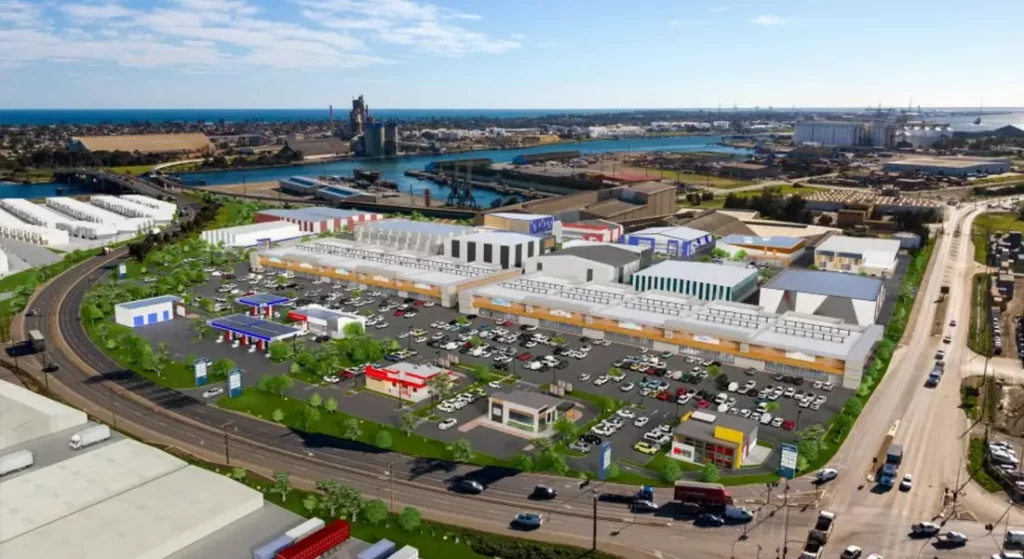The proliferation of property development is being driven by consumer demand for greater Large Format Retail precincts, the retailers who are keen to expand their store numbers, and developers and investors seeking to profit from the strength of the industry. The LFRA aims to work openly with planners, developers, agents and investors to ensure new developments meet business, consumer and community needs through informed, considered design and leasing strategies. New developments must include the appropriate infrastructure for frequent load access and customer parking; the design mustn’t create unnecessarily high occupancy costs, and it is essential that the mix of Large Format Retailers be considered so as to ensure long-term success for every party committed to the development.
There is an undeniable structural shift in the retail market. Many influences impacting on the market are entwined; they include online sales, technological advances including smart phones, increased travel overseas, price harmonisation, the diminished number of departments within department stores and the low value import threshold. Retail needs to be adaptive; planning and zoning laws need to provide for the flexibility to allow retailers to meet current and future challenges.
In order to compete, most of the Australian Large Format Retail market is in urgent need of the appropriate freeing up and harmonisation of planning and zoning laws that impact our market. This perspective is supported by the following reports/reviews:
Particularly of note is ‘section 8.4’ in the Productivity Commission’s report on the ‘Economic Structure and Performance of the Australian Retail Industry’ which we wish to draw to your attention:
“…Prescriptive Local Planning Restrictions on Retailers
To meet evolving product market requirements, store formats must also be allowed to adapt. Restrictions on store formats impact on a retailer’s ability to adapt to new competition and changing consumer preferences within the market. The Commission’s recent benchmarking report identifies that even where businesses are allowed to operate in a particular locality — because their business model is consistent with the overarching activity centre policy or zone description — they then face a raft of local planning restrictions. This regulatory overlap arises because the legal framework for zones is at the state and territory level, but the detailed specification of zones is at the local level. It is recognised that at times restrictions on competition may be required to achieve the objectives of the planning system, such as public amenity or equitable access to facilities and services. This is because commercial businesses are usually focused on the private costs and benefits of a development or planning proposal and may not necessarily consider the public environmental, social or economic costs and benefits associated with their decisions. Consistent with this rationale for government intervention, Stockland suggests: … local governments should focus on those issues with external impact (either on the community or sites) such as traffic, servicing, noise, overshadowing where such issues impact public space or adjoining site amenity. (sub. DR203, p. 3) Nonetheless, there are large numbers of prescriptive requirements which can be found in approved council plans in some or all jurisdictions which appear to unjustifiably or needlessly restrict competition, including:
A large, flat site to accommodate a large format building, on-site parking, vehicular access for both customer and delivery, and landscaping.
Good site exposure to passing traffic with location on a major arterial road or with convenient access to the major arterial road network.
Affordable and sustainable rents in line with the retailers’ business strategies to permit the display and storage of large items.
A suitably designed site and building that safely accommodates the delivery of stock by large commercial vehicles and the loading/collection of bulky goods by customers.
A site which can conveniently and safely accommodate up to 40 trucks and semi-trailers per retailer per day.
A customer car parking ratio of at least 3 spaces per 100 square metres of floor space.
Suitably located premises to serve a wide regional catchment of over 100,000 residents, with some of the larger stores requiring catchments of 150,000 plus.
Co-location with other Large Format Retailers
A considered mix of retailers that promotes the long-term success of the development.

Not surprisingly, Large Format Retailing is extremely popular with Australians who wholeheartedly support the concept with an estimated spend of $92.4 billion on items from Large Format Retailers.
Today’s Large Format Retail consumers are particularly attracted to the high level of competition on price, range and service available form the various Large Format Retailers.
And they’re destination shoppers, rarely combining shopping for bulky goods with trips to other retail categories such as grocery items, clothing and so on.
Not only do Large Format Retail customers want low prices and easy access to retailers at the one location, they also demand parking facilities so they can travel by car and transport goods home themselves.
Consideration to public safety is of primary importance in all Large Format Retail developments. Customer transport needs plus regular goods transport, loading and unloading requirements mean infrastructure must be designed around constant large as well as smaller vehicle use.
The Association is committed to working with all stakeholders, in particular the government, planners and developers to improve understanding of Large Format Retail customers’ and retailers’ needs to create a safe and enjoyable shopping experience.
Energy consumption and sources, the circular economy, packaging and waste, including stewardship programs, are all some of the tentacles of sustainability. LFRA members have embraced, and are proud, of the numerous sustainability initiatives they have introduced.
On 23rd October 2019 the ACCC granted the LFRA approval to collectively bargain for up to 1% of Australia’s energy consumption. The application comprised of 40 LFRA member participants, covering 4,096 sites across Australia. The authorisation is for 11 years. The ACCC authorisation sits over and above the installation of roof top solar by many LFRA members.